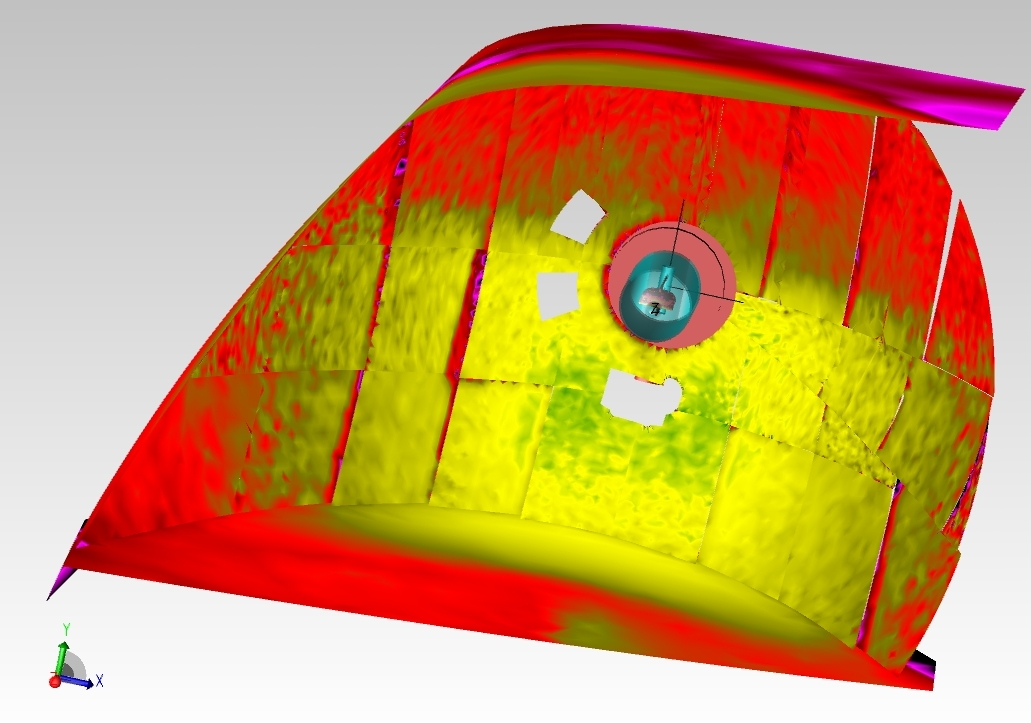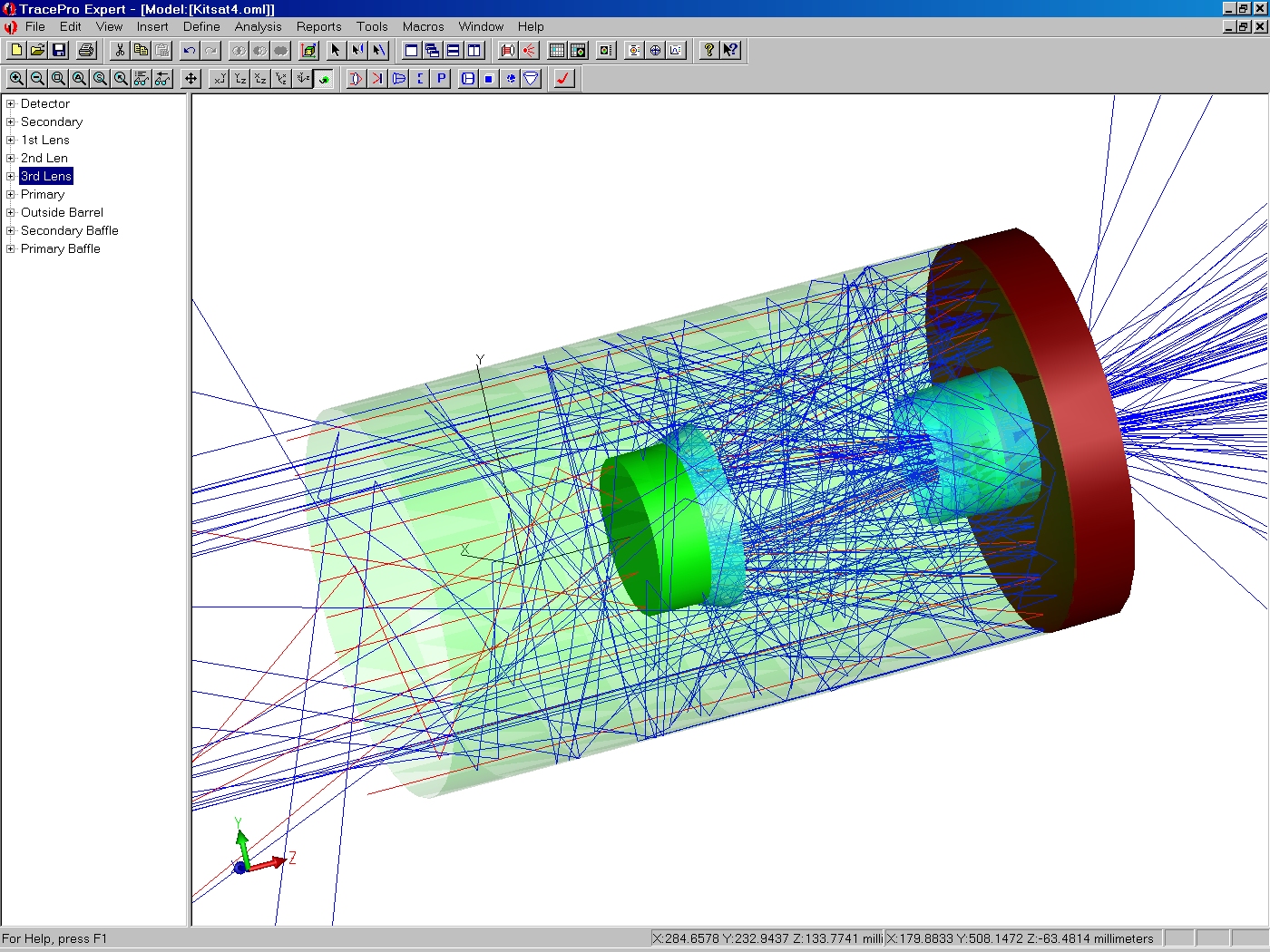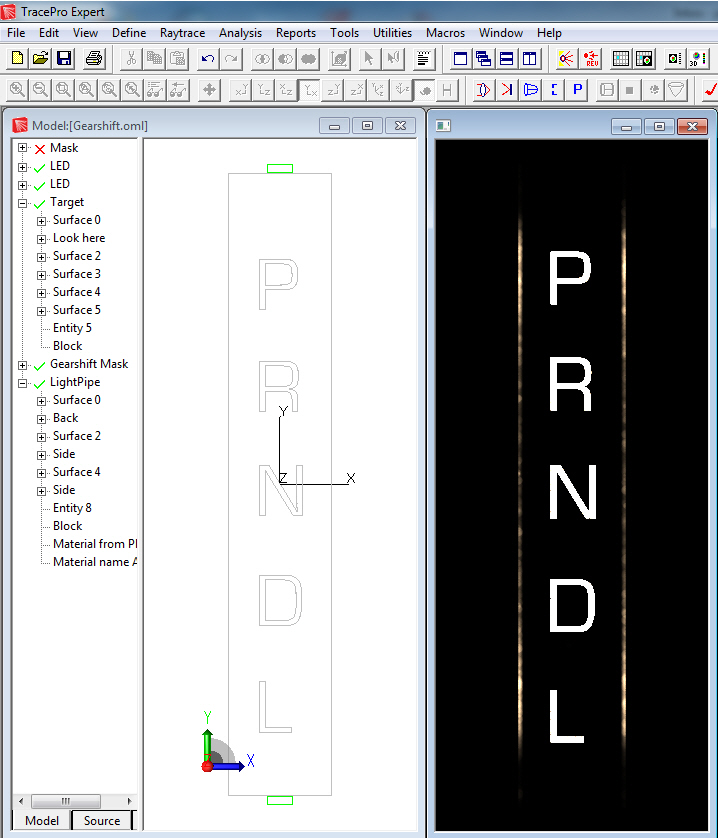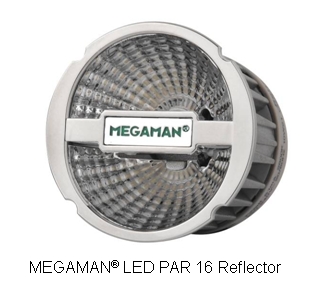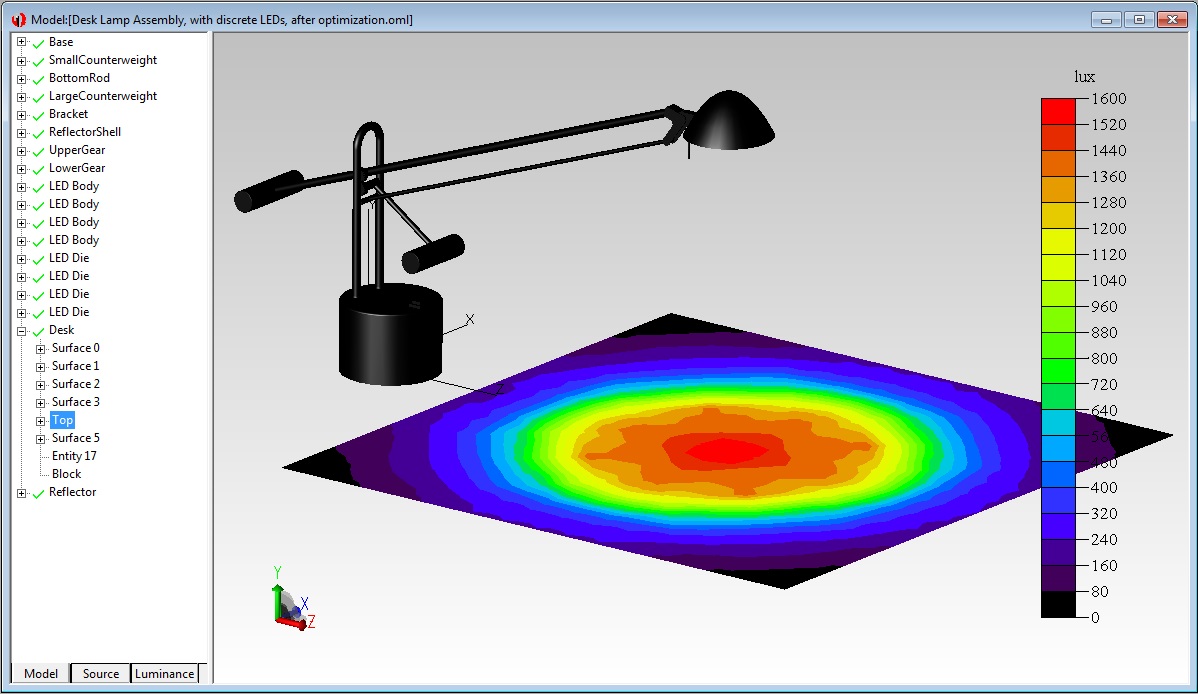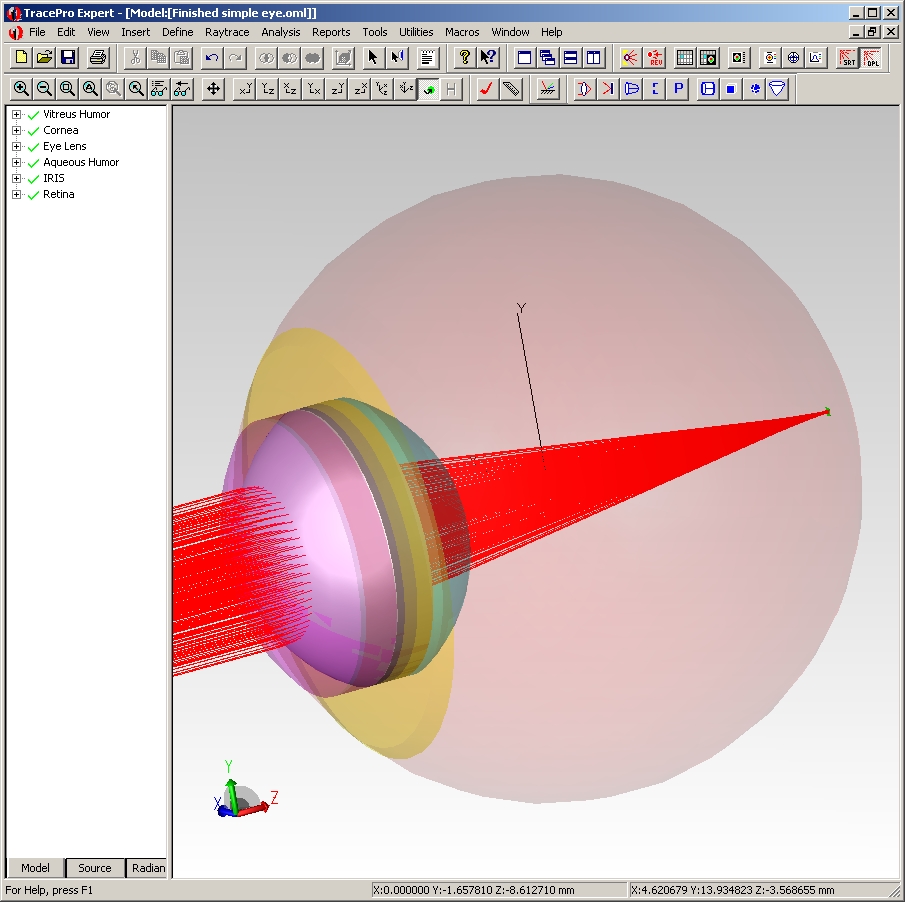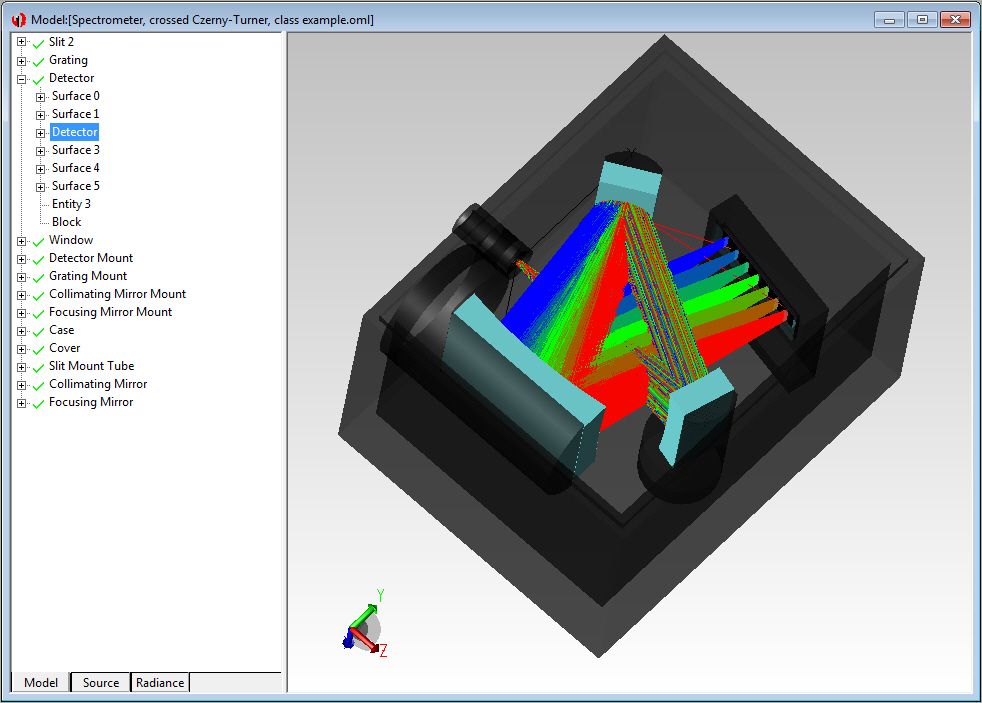- Illumination Analysis & Optical Design Software
- TracePro – Illumination & Optical/Opto-Mechanical Design Software
Features | Applications | RayViz for SolidWorks - OSLO – Optical Design Software
Feature Highlights - VirtualLab - Ray, Wave & Electromagnetic Optic Design Software
Software | Solutions | Services - Lighting Design Software & Services
Applications | Aerospace and Defense | Automotive Lighting | Display Design | Industrial Manufacturing & IT | Lighting | Light Pipe Design | Medical & Life Sciences | Stray Light
Applications
TracePro is used across many industries for opto-mechanical design and analysis. Major applications include:
- Aerospace and Defense – avionics, light panels, HUDs, telescopes,
stray light, baffles, ghost images, thermal effects, narcissus effects, diffraction analysis, polarization - Automotive – instruments, dashboards, light pipes, headlights, taillamps, warning lights, interior lighting, auxiliary lighting
- Display Design – projectors, flat panels, mobile devices, LCDs, plasma, LED, TVs, light pipes, signage, films and filters
- Industrial Manufacturing and IT – machine vision, laser cavity design,
lab instruments and measurement systems - Lighting – lamps, LEDs, luminaires, louvers, transportation signs,
emergency lighting, day lighting, displays, consumer products, entertainment - Medical and Life Sciences – tissue propagation, glucose calculation,
oxygen heart rate and pulse monitoring, flow cytometry, medical lighting,
surgical lighting
Click to learn more about these popular applications for TracePro.
To discuss your specific application, please contact an applications engineer.
AEROSPACE & DEFENSE
(Back to Top)TracePro and OSLO are robust tools for designing and analyzing optical systems for aerospace and defense applications. Both have been used to design and analyze many notable NASA optical systems, including the
James Webb Space Telescope, the Mars Rover cameras, and the
Terrestrial Planet Finder Coronagraph.
TracePro offers designers of military, aviation, and homeland defense systems
an incredibly accurate and comprehensive design environment. The unique nature of these applications requires a tool with the versatility to simulate optical systems operating at wavelengths ranging from the extreme ultraviolet,
through the visible and infrared, and out to millimeter waves.
TracePro is also used to design baffles for analyzing and suppressing stray light due to scattering, diffraction, ghost images, as well as self-emission of
infrared and longer wavelength systems.
TracePro can simulate polarization effects, and many other aspects of
optical system performance, including:
- Stray light analysis and telescope baffle design
- PST, PSNIT, and OAR
- Ghost image analysis
- Simulation of spectrometers and other multi-spectral systems
- Simulation of polarization effects, including birefringence
- Thermal effects and loading
- Narcissus effects
- Diffraction analysis
AUTOMOTIVE LIGHTING
(Back to Top)TracePro is used by automotive designers and contract manufacturers to integrate LEDs, HID lamps, and incandescent lighting into cars, trucks, and commercial vehicles. LED-based vehicle headlamps have become commonplace on luxury to economy vehicles. Light rays emitted from these high-power LEDs must undergo a detailed geometric analysis in order to prove optical efficiency for each component part.
Interior use of LEDs has expanded from ambient lighting to dashboard and gauge clusters using lightpipes and light guides, utilizing gentle curves to
steer light by Total Internal Reflection (TIR) combined with sharp edge corners
that serve as mirrors. These hollow light tubes enable designers to utilize fewer
LEDs for the same visual effect.
Tracepro has also been used to evaluate and design Head-Up Displays (HUDs), windshield systems, collision detection systems, rearview cameras and
backup illumination systems.
TracePro is a comprehensive, versatile software tool for modeling the propagation of light in automotive interiors and LED headlamp clusters.
From a TracePro model, designers can analyze:
- Illuminance of any interior or display lighting
- Luminance and photorealistic renderings of cockpit illumination, dashboards, instrument panels and all manner of interior and exterior lighting
- 3D illuminance on any optical/illumination geometry
- Candela plots on roadway or on any surface in four different formats
TracePro helps automotive designers visualize the effect of their LED layout, design, and placement through the use of photorealistic rendering of
interior and exterior uses, including the illumination of:
- Instrument panels, consoles, and other controls
- Door handles and window openers
- Footwells and storage areas
- Trunks/boots and truck beds
- Headlamps and tail lights
- Warning Lamps
- HUD and windshield design
- Navigation, stereo and informational displays
DISPLAY DESIGN
(Back to Top)TracePro is used by the world's top display manufacturers for display design.
The design and development of displays and backlights involves adherence to important system performance criteria, including spatial and angular light output distribution, uniformity, intensity, and spectral characteristics. Quickly achieving these criteria with a manufacturable and cost-effective design requires
modeling software – like TracePro – that is powerful, easy-to-use, and accurate.
TracePro is a comprehensive, versatile software tool for modeling the propagation of light in imaging and non-imaging opto-mechanical systems. Models are created by importing from a design program or a CAD program,
as well as by directly creating the solid geometry in TracePro. Source rays propagate through the model with portions of the flux of each ray allocated for absorption, specular reflection and transmission, fluorescence, and scattering.
From the model, designers can analyze:
- Light distributions in illumination systems
- Stray light, scattered light, and aperture diffraction
- Throughput, loss, or system transmittance
- Flux or power absorbed by surfaces and bulk media
- Polarization effects
- Fluorescence effects of phosphors
- Birefringence effects
- CIE plots
- Intensity
- Lit appearance
- Luminance distributions
- Power per area, irradiance/illuminance distributions
TracePro offers display designers the confidence that the simulated design
will predict the performance and aesthetics of finished products without
costly prototype iterations for a wide variety of technologies, such as:
- Projection and flat panel displays
- Edge-Lit and Direct-Lit televisions
- Liquid Crystal Displays (LCDs)
- Plasma Displays
- Field Emission Displays (FEDs)
- Organic LED Displays (OLEDs)
- Electroluminescent Displays
- 3D displays
- Heads-Up Displays (HUD)
- Digital signage
- Consumer electronics
- Avionics
- Medical imaging
- Backlights
- LEDs and fluorescent lamps
- Lightpipes
- Brightness Enhancing Films
- Dichroic and Hot Mirror Filters
INDUSTRIAL MANUFACTURING & IT
(Back to Top)TracePro offers OEM equipment and industrial designers an intuitive tool for optical and illumination systems with a familiar CAD interface. Machine vision and automatic inspection system design must take into account the use of cameras, lighting, and laser components, requiring designers to understand scattering effects, stray light, lighting uniformity, and energy propagation.
TracePro is a comprehensive, versatile software tool for modeling the propagation of light in imaging and non-imaging opto-mechanical systems. Models are created by importing from a design program or a CAD program or
by directly creating the solid geometry in TracePro. Source rays propagate
through the model with portions of the flux of each ray allocated for absorption,
specular reflection and transmission, fluorescence, and scattering.
From the model, designers can analyze:
- Model real scattering effects using full anisotropic properties and asymmetric BSDF
- Import from five popular optical design programs
- Fully model stray light from lens mounts, packaging, and thermal sources
- Analyze multiple paths using nonsequential ray tracing algorithms
- Track absorbed and incident flux on every surface and object using
flux reports - Track flux in laser cavities
- Export 3D flux data to third-party laser cavity design and analysis programs
- Watch energy propagate through the laser cavity along any axis using
the volume flux viewer - Analyze flux for absorbed, incident, originated, or exiting radiation
- Analyze any material or bulk scatter sources for incident, originating, absorbed, and lost energy
- Define multiple sources using asymmetric surface emission, including
user-defined properties - Analyze birefringence in crystals, including splitting of rays into ordinary
and extraordinary components - Track full polarization effects using Stokes vectors and Mueller matrices
TracePro offers equipment and industrial designers the confidence that the simulated design will predict the performance and accuracy of finished systems without costly prototype iterations for a wide variety of technologies, such as:
- Illumination for machine vision
- Design of laser cavities
- Virtual prototyping of consumer electronic devices
- Laboratory instruments and measuring devices
LIGHTING SYSTEMS
(Back to Top)TracePro offers lighting designers the most accurate and comprehensive
design environment available. Lighting system design often involves strict adherence to system performance criteria, including spatial and angular light output distribution, uniformity, intensity, and spectral characteristics, along with aesthetic factors, such as lit and unlit appearance. The result is a cost-effective
design that is ready for manufacture.
TracePro is a comprehensive, versatile software tool for modeling the propagation of light in imaging and non-imaging opto-mechanical systems. Models are created by importing from a design or CAD program or by directly creating the solid geometry in TracePro. Source rays propagate through the model with portions of the flux of each ray allocated for absorption,
specular reflection and transmission, fluorescence, and scattering.
From the model, designers can analyze:
- Light distributions in illumination and imaging systems
- Lumens exiting, absorbing, and incident at the component and system levels
- Candela distributions
- Optical efficiency, luminance, and radiance metrics
- Photorealistic rendering
- Fluorescence effects of phosphors
TracePro offers lighting system designers the confidence that the
simulated design will predict the performance and aesthetics of finished products
without costly prototype iterations for a wide variety of technologies, such as:
- LEDs
- Lamps
- Luminaires and louvers
- Transportation signs and emergency lighting
- Daylighting
- Architectural lighting design
- Display lighting
- Consumer products
- Automotive lighting
- Avionics lighting
- Medical lighting
- Entertainment lighting
LIGHT PIPE DESIGN
(Back to Top)Light pipes or light guides are commonly used in consumer electronics, avionics, instrument panels, switches, indicators, and display devices.
Typically, light pipes are clear plastic optical devices molded from a single piece of material, and are used to guide light to where it is needed. Gentle curves are used to steer light by Total Internal Reflection (TIR) combined with sharp edge corners that serve as mirrors. Hollow light tubes are also used in daylighting applications for buildings, tunnels, and other structures.
Example TracePro applications for light pipe design are:
- Automotive instruments and dashboards
- Aviation light panels, avionics, switches, and indicators
- Displays, light panels, mobile devices, HDTVs, and digital signage
- Consumer electronic displays, knobs, and switches
MEDICAL & LIFE SCIENCES
(Back to Top)TracePro offers life sciences and medical systems designers a sophisticated,
multi-faceted simulation tool ideally suited to their needs. TracePro facilitates the
opto-mechanical design and development process by communicating design elements and system performance across disciplines, such as optics, mechanics, materials, chemistry, and biology. This is an extremely important benefit to medical instrumentation and device designers who must effectively communicate
system level specifications and design elements to both scientists and engineers.
TracePro enables medical system designers to minimize the cost and time associated with iterative hardware prototyping and laboratory and
clinical testing. Models are created by directly creating the solid geometry in TracePro or by importing from a lens design program or a CAD program. Source rays propagate through the model with portions of the flux of each ray allocated
for absorption, specular reflection and transmission, fluorescence, and scattering. From the model, analyze:
- Light distributions in illumination and imaging systems
- Stray light, scattered light, and aperture diffraction
- Throughput, loss, or system transmittance
- Flux or power absorbed by surfaces and bulk media
- Light scattering in biological tissue
- Polarization effects
- Fluorescence effects
- Birefringence effects
TracePro offers medical systems designers the confidence that the simulated design will predict the performance and accuracy of finished devices, such as:
- Fluorescence spectroscopy
- Raman spectroscopy
- UV, VIS, NIR, IR spectroscopy
- Flow cytometry
- Micro arrays and plate readers
- Nucleic acid amplification
- Assay, cell, and tissue-based imaging
- Confocal laser scanning and fluorescence microscopy
- Medical imaging and endoscopy
- In-Vitro/in-vivo diagnostics
- Biosensors
- Molecular detection: quantum dots, nanocrystals, luminescent reporters
- Laser and LED surgical devices
- Laser beam delivery systems for surgical instrumentation
- Laser Induced Fluorescence (LIF) Detection
- Fluorescence Resonance Energy Transfer (FRET)
For more information on Medical Device Design Using TracePro, view the Biomedical Brochure.
STRAY LIGHT ANALYSIS
(Back to Top)TracePro is used extensively for stray light analysis and related applications, including:
- Baffle design for stray light suppression
- Analysis of stray light due to scattering, aperture diffraction, and ghost images
- Self-emission of infrared and longer wavelength systems
- Simulation of polarization effects including birefringence
- Simulation of spectrometers and other multi-spectral systems
- Thermal effects and loading
- Narcissus effects
- Diffraction gratings
Due to its versatility and generality, TracePro has been used to simulate optical systems operating at wavelengths ranging from the extreme ultraviolet, through the visible and infrared, and out to millimeter wavelengths. The intuitive user interface and CAD interoperability minimize setup time needed for stray light analysis.

